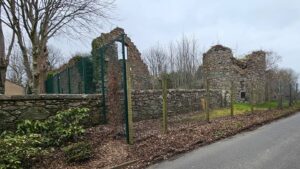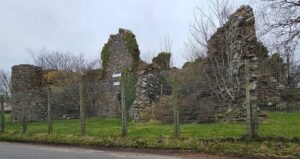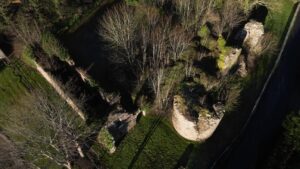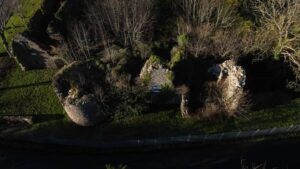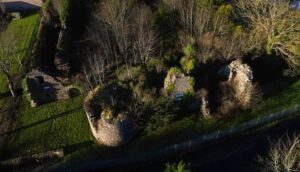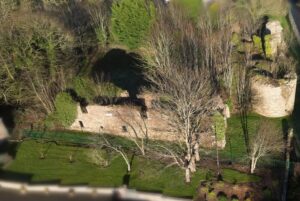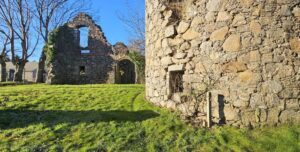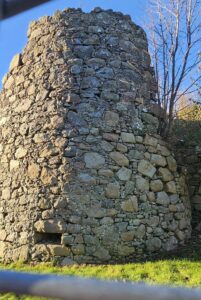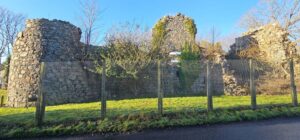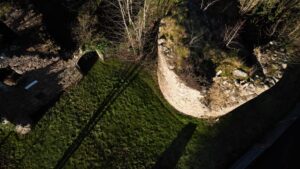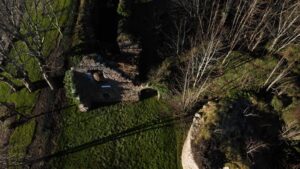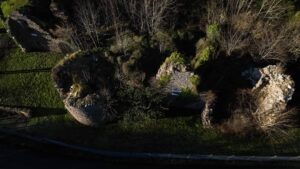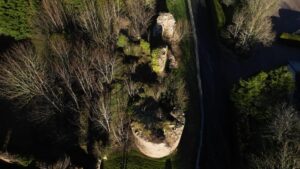Inverugie Castle near Peterhead Built in 1660
Inverugie Castle was an exceptionally fine, late 16th century tower house consisting of an oblong main block with 2 round towers.
Inverugie Castle, Peterhead also known as Cheyne’s Tower.
Built in 1660 by Keith Earl Marischals who’s main seat was Dunnottar Castle.
Passed to James Ferguson, 3rd Lord of Pitfour. It was still in immaculate condition when he passed away in 1820 but was plundered by the 5th Lord and his successor. It fell into disrepair and was damaged in gales in 1890.
It was declared unsafe and was further damaged by gales on New Year’s Day 1899 after which it was ordered to be blown up. The father of poet Robert Burns trained as a gardener here before moving to Ayrshire.
It was in a perfect state until 1820 when the roof and wooden flooring were stolen. Left open to the elements is still stood substantially intact until 1899 when it was blown up with explosives.
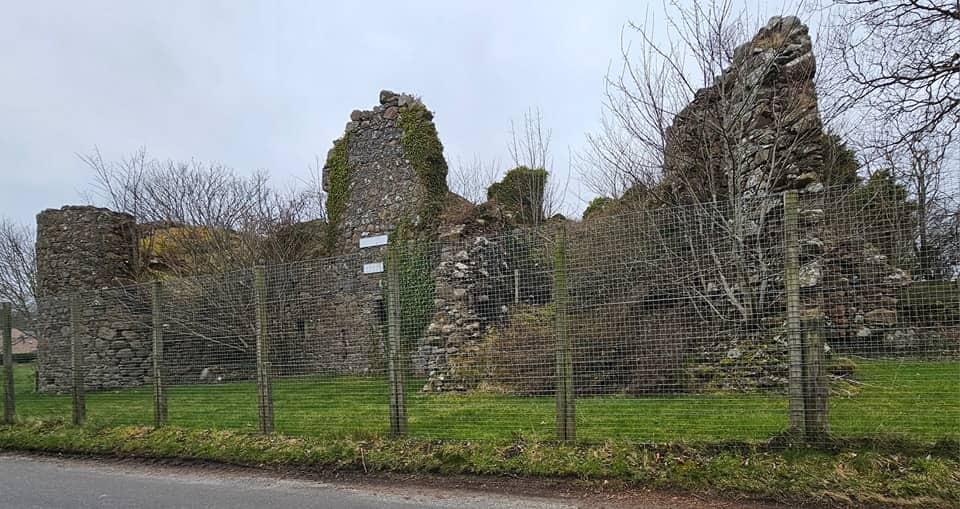
Inverugie Castle is located two miles from Peterhead on the north east coast.
The ruins are a small mound only three metres high above the River Ugie. This is all that remains of a wooden motte-and-bailey castle of Inverugie built by the Cheynne family in the 12th century. The stone ruins date from later than the original building on the site.
The location of the motte relative to the river at Inverugie suggests it was built to protect the ford at this point and that the bailey ditch (moat) would have been filled with water from the Ugie for additional defence.
In the basement of the oblong tower house there was the storage area and kitchen. The next level contained the hall used for entertaining guests. In the north and south corners of the hall were small turnpike stairs accessing both round towers. On the middle of the west side was a third tower with the main staircase. This faced into the cobbled courtyard with its wall beside the river Ugie.
The castle of Inverugie was first raised by the Cheynne family in the 12th century. By the mid-14th century the estate of Inverugie had passed to the Keith Earl Marischals who had their main seat at the coastal fortress of Dunnottar Castle. They built the current (ruined) stone castle of Inverugie south of the original wooden motte in around 1660. In the 19th century an oak heraldry shield was found in a local cottage with the arms of William Keith, 7th Earl Marischal and its date was carved as 1660.
The Keith lands were forfeited after the Jacobite Rebellion and some time after 1745 the Inverugie estate passed from the Keiths to one James Ferguson the third Laird of Pitfour who kept the building in a perfect state until he died in 1820. However, the fifth Laird stripped the Castle of all the restoration undertaken and his successor exacerbated the neglect even further.
By 1890, the Inverugie Castle was in poor condition and was unable to withstand inclement weather. Gales in April 1890 resulted in the collapse of some walls and the stair tower. It was declared unsafe by the Local Authority following further storms on New Years Day 1899. The estate factor, William Ainslie, probably acting under instruction from the Laird at that time, arranged to have much of what was left of the ruins blown up, weakening the remaining structure. Within a fortnight, little remained of the castle.
Charles McKean described the castle as “a splendid double-courtyard Renaissance chateau” and also said “It consisted of a four-storey block with circular angle towers and a stair turret. William Burnes or William Burness (1721 – 1784), the father of Robert Burns the poet, was born at Clochnahill Farm, Dunnottar, and trained as a gardener at Inverugie Castle, before moving to Ayrshire.



